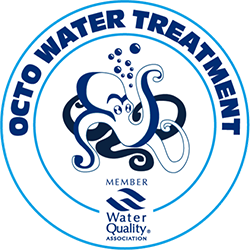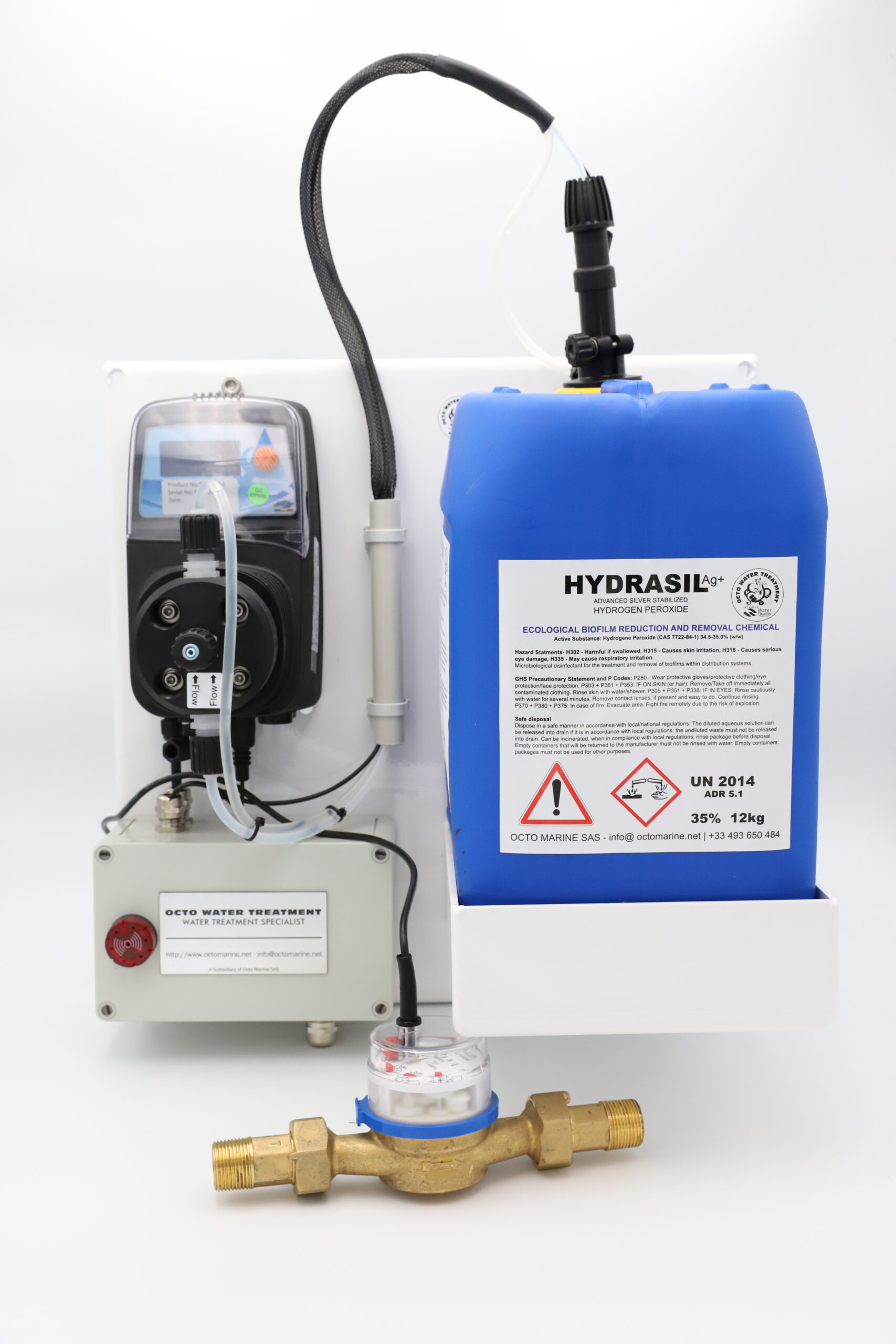Maintaining sanitation onboard ships is a critical responsibility for all operators. It is a high standard of sanitation on ships is crucial to preventing infection and contamination. According to the World Health Organization (WHO) Guide to Ship Sanitation,“it is the responsibility of each ship operator to establish all practicable measures to ensure that no sources of infection or contamination are present on board, including in the water system.” This responsibility extends to ensuring that fresh water systems are safe, reliable, and free from contaminants.
We have created a short PDF that goes over all the main points, you can download it below. This article will help you further with more detail on all areas of the PDF.

In this breakdown, we will delve into the essential components of:
- Water Safety Plans
- The importance of Disinfection
- Best Practices for Bunkering
- Water Distribution Systems.
Our aim is to provide a thorough understanding of how to maintain potable water quality onboard ships, emphasising the importance of a Freshwater Safety Plan (FWSP) and adhering to the highest standards of sanitation.
Benefits of Ensuring an Effective Ship Sanitation
Effective ship sanitation offers numerous benefits that extend beyond mere compliance with regulations, ensuring the health and safety of everyone on board. One of the primary advantages is the prevention of waterborne diseases. Proper sanitation practices, including the use of a Fresh Water Safety Plan, help eliminate pathogens that can cause illnesses such as Legionnaires’ disease, gastrointestinal infections, and other harmful conditions. By maintaining a high standard of water quality, ship operators can protect the health of the crew and passengers, leading to fewer medical emergencies and a healthier onboard environment.
Additionally, effective ship sanitation enhances operational efficiency and longevity of the vessel’s water system. Regular monitoring and maintenance of the water supply and distribution systems prevent the buildup of biofilm, scaling, and corrosion, which can lead to costly repairs and downtime. Implementing a robust sanitation protocol also aids in:
- Regulatory Compliance: Ensuring that the ship meets international and local sanitation standards, avoiding fines and operational restrictions.
- Crew Morale and Productivity: A clean and safe water supply boosts crew morale, leading to higher productivity and job satisfaction.
- Reputation Management: A commitment to high sanitation standards enhances the ship’s reputation, attracting more passengers and business opportunities.
- Cost Savings: Preventive maintenance reduces the likelihood of major repairs and extends the lifespan of the water system components, resulting in long-term cost savings.
- Reducing the risk of charter and sale cancellations: Poor water analysis results and the presence of a biofilm can potentially delay the sale of a vessel or result in the cancellation of a charter.
By prioritising sanitation, ship operators not only safeguard the health of those on board but also enhance the overall operational performance and profitability of their vessels.

Fresh Water Safety Plans: A Proactive Approach
A Fresh Water Safety Plan is an effective overarching management approach for ensuring the safety of a drinking-water supply. The FWSP comprises three key components:
- System Assessments: Evaluating the entire water supply system to identify potential hazards and risks.
- Operational Monitoring: Regularly checking the water quality and system performance to ensure safety standards are met.
- Management and Communication: Establishing protocols for managing risks and communicating effectively with the crew.
Implementing a Fresh Water Safety Plan aids conformity with current regulations, facilitates preventive maintenance, and serves as an audit tool ensuring every attempt is made to guarantee the quality of water on board. It also acts as a handy reminder for current and new crew members regarding dates of analysis and results, servicing, winterisation, and filter changes.

Disinfection: A Crucial Step in Water Safety
Disinfection is vital to maintaining microbiologically safe water on ships. A disinfectant residual should be detectable in water samples at the port, on the water barge, and on the ship. The presence of a measurable disinfectant residual contributes significantly to ensuring that the water is microbiologically safe. Facilities for disinfection, when and where necessary onboard, need to be available. Regular cleaning and disinfection of hoses and fittings should be performed to prevent contamination. Residual sterilisation should be measured and logged on a weekly basis.
Source of Potable Water
Ships using ports where water treatment is unreliable must carry calibrated equipment for basic testing, including turbidity, pH, and disinfectant residual. It is crucial to ensure the capacity to dose disinfectant or filter to appropriate levels to provide a minimum level of safety.
Bunkering Stations: Mitigating Risks
To mitigate risks during the bunkering of potable water, appropriate hoses and fixtures should be made of material suitable for disinfection and should not support the growth of biofilm. The filling hoses should be stowed with the ends capped in special lockers that are closed, self-draining, and fixed above the deck.
Water Distribution System: Design and Maintenance
Proper design and maintenance of the water distribution system are essential for preventing contamination. Crew must be trained to take hygienic precautions when laying new pipes or repairing existing ones. It is important to minimise the points where water could collect and become warm (>25°C) and stagnant. For example, temperature-control valves that prevent scalding must be fitted as close to the point of use as possible to minimize the formation of warm-water pockets. The number of distribution system dead ends should be minimised to avoid water stagnation.
Check Octo Marine’s Hydrasil Ag+® Integrated Treatment System
Prevention of Backflow
Potable water piping must not pass under or through sewage tanks or pipes or tanks holding non-potable liquids. The distribution lines, including suction lines of the potable water pump, should not be cross-connected with the piping or storage tanks of any non-potable water system.
Investigative and Corrective Actions
In the event of contamination of water on the ship, the ship’s operator must take immediate mitigation measures or arrange for an alternative water supply. Appropriate actions may include additional treatment, flushing, and disinfection of transfer equipment or ship water tanks. Repairs of defective filters, pipes, or tanks, or breaking of cross-connections, may also be necessary.
Verification Monitoring
While simple on-site tests can be performed by appropriately trained ship staff, sampling for complex chemical and microbiological analysis should always be performed by well-trained professionals authorised by a certified laboratory. It’s important that testing for Legionella bacteria should be undertaken monthly, quarterly, or annually depending on the ship’s environment and the climate of the shipping passage. These tests are specialised and need to be undertaken by properly equipped laboratories with experienced staff.
Quality Fresh Water Testing with Hydrus Laboratory
Hydrus Laboratory, part of the Octo Marine Group, is a specialised water analysis laboratory for the marine industry, operating under ISO 17025 standards and offering comprehensive services such as bacterial analysis, Legionella analysis, physicochemical analysis, high fog and misting systems analysis, and comprehensive reports and advice. They also ensure compliance with the MLC2006 sanitation certificate. It is recommended to carry out analysis every six months.

Choose A Reliable Partner
By following these guidelines and implementing a robust Fresh Water Safety Plan, ship operators can ensure the safety and cleanliness of the water supply onboard, thereby protecting the health and well-being of the crew and passengers. Partnering with the right specialists can make navigating the Shi[s Guide to Sanitation much easier, save time, and ensure your yacht stays compliant..
For more information or to schedule water testing, contact Octo Marine at:
- Phone: +33 (0)4 93 65 04 84
- Email: info@octomarine.net
If you would like a visual guide for Ship Sanitation, download this PDF.






